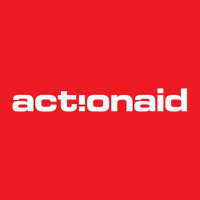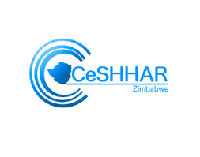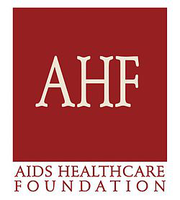Evaluation of the Ensuring Access to Sexual and Reproductive Health and Rights for All in Zimbabwe project.
Ngo & Social Services Jobs
- Population Solutions for Heal…
- Expires 10 Dec 2021
- Bulawayo
- Internship
Job Description
Project Overview
In May 2018 PSI was awarded SEK 60 million in funding from the Embassy of Sweden to leverage proven, innovative, integrated, and client-centered services to reach all Zimbabweans with the SRHR approaches that best meet their needs. A SEK 3,511,000 plus up fund allowed for expanded service delivery in urban areas, and for solar power installation at 3 program supported locations. A SEK 20 million cost extension extended the original program from three to four implementation years which are ending in April 2022.
During the last year of the program, Population Solutions for Health (formerly PSI/Zimbabwe) became an independent partner responsible for delivering the program from an implementation perspective. The Sexual and Reproductive Health and Rights for All (SRHR4All) project seeks to achieve continued uptake and use of modern contraception, shifting of the method mix to longer-term methods, reductions in discontinuation, and bridging the gap in unmet need for FP and improving overall SRHR services. The project places a particular focus on reaching those left behind, including youth, survivors of sexual violence, people with disabilities (PWD), people living with HIV (PLHIV), the poor, those living in remote areas, and other marginalized groups.
To achieve the project outcome of increased and sustained use of SRHR products and services for all Zimbabweans with particular focus on marginalized and hard-to-reach groups, the project prioritized interventions under two key outputs:
1) Provide innovative and integrated SRHR, VAWG, and HIV services; and
2) Strengthen QA systems for SRHR services.
These outputs enable PSI and partners to establish high-quality, integrated SRHR services in as many sites as possible during this project, improving the value for money of interventions and outreach so that future projects can amplify the scale of the integrated services for reaching vulnerable and underserved populations through more targeted outreach. The design also enables support for the MoHCC and HDF in product and service demand creation, increased and improved QA, scale-up of pilots and innovations, and more.
2. Project Evaluation Overview
2.1 Purpose and Specific Objectives
The purpose of this evaluation is to assess the achievements of the aforementioned project against planned results, challenges in implementation, lessons learnt, and determine the remaining SRH needs of project beneficiaries.
Specific Evaluation Objectives
• Evaluate the entire project in terms of effectiveness, relevance, efficiency, sustainability, coherence, and impact with a focus on assessing the results at outcome level and project goal.
• Assess the flexibility of the project to adapt and respond to changes in operational environment posed by humanitarian crisis such as COVID-19
• Generate key lessons, identify promising practices for learning and propose potential actions which may be developed to amplify the project effects
• Provide recommendations and best practices that may be used in current and future programming and strategy.
2.2 Evaluations Criteria and Questions
The evaluation will be carried out using the relevance, efficiency, effectiveness, sustainability, and impact criteria. Below are some guiding questions for each criteria:
a) Relevance – Assess design and focus of the project.
• Is the intervention doing the right things?
• To what extent did the interventions funded by the Embassy of Sweden under this grant address the needs of the target population?
• Were the key elements of the approaches used to implement interventions relevant to the objectives of the project?
• To what extent has the intervention objectives and design responded to beneficiaries’, global, country, and partner/institution needs, policies, and priorities?
• • To what extent has lessons learned from what works well and less well been used to improve and adjust project/programme implementation?
b) Effectiveness: the extent to which grant achievements and results were achieved.
• What results of specific interventions funded under this grant were achieved against planned results?
• To what extent has the intervention achieved, or is expected to achieve, its objectives, and its results, including any differential results across groups?
• What factors contributed to the achievement or non-achievement of the results?
• What implementation strategies/approaches were effective or ineffective?
• What changes were experienced as a result of the intervention?
• What unintended results were achieved and why?
• Has the M&E system delivered robust and useful information that could be used to assess progress towards outcomes and contribute to learning?
c) Efficiency – Appropriateness of the resources invested compared to outputs and results achieved
• What resources were used in implementing the program?
• Were the costs of interventions funded under the grant accurately projected and effectively tracked?
• Did the results (outputs/outcomes) of the grant justify the cost incurred?
• Were the resources effectively utilized?
• Are there alternative ways and means of delivering the same or better results (outputs and outcomes) at the same cost?
• Were management and accountability structures of the grant appropriate?
• Did the grant financial management requirements and procedures affect project implementation?
• To what extent has the intervention delivered, or is likely to deliver, results in an economic and timely way?
• To what extent do the total project costs compare to the project outcomes/benefits?
• What are the strengths, weaknesses, opportunities and threats of the grant implementation process?
d) Impact
• What intended change did the project bring about at individual and community level and has the change solved the described problems?
• To what extent has the project or programme generated, or is expected to generate, significant positive or negative, intended or unintended, high-level effects?
• What unintended effects or change can be attributed to the project intervention?
• To what extent did the project change the lives of the target beneficiaries?
e) Sustainability - To what extent are the benefits for beneficiaries of the SRH for All in Zimbabwe grant likely to be sustained after the grant completion period?
• To what extent will the net benefits of the intervention continue, or are likely to continue?
• What measures (resources and capacities) did implementing partners of the grant put in place to sustain the interventions funded by this grant?
• What measures can be taken improve prospects of sustainability of project outcomes and the potential for replication of the approach?
2.3 Lessons learned and recommendation.
Learning under this project is based on reflection of outputs, processes, outcomes and experiences to inform future programming (both problems and opportunities). Some issues to be assessed include but are not limited to
• Which implementation strategies/approaches were effective or infective? Explain
• Was there variation on project results by population group and/or geography? What could be the attributes for the noted comparative differences?
• What were the key learnings from working with each of the project’s primary target groups as well as key project stakeholders?
Regarding recommendations, the consultant is expected to proffer actionable recommendations for each evaluation criteria based on evaluation findings.
Duties and Responsibilities
Methodology for Evaluation:
The evaluation is expected to use a mix of qualitative methods including desk review of key documents, key informant interviews, focus group discussions, observations, testimonies of beneficiaries among others. The evaluator will design detailed methodology including evaluation tools for this evaluation to ensure all evaluation questions can be answered. The evaluation should also provide an implementation plan detailing how the proposed methodology will be operationalized. The key evaluation questions will guide the overall assessment. Sub-questions and specific methodological approaches will be further elaborated in an evaluation matrix by the evaluation team in order to answer the main questions. In order to answer the questions, the evaluation will use a mix of quantitative and qualitative data collection methods, including content analysis of relevant documents and data, key informant interviews, focus group discussions and a survey if applicable. Specific data collection methods can include:
• Desk-review of project documents and reports, including the program annual progress reports submitted to the Embassy;
• Routine program data analysis;
• Semi-structured interviews and/or focus group discussions with the following key informants:
4. Deliverables and Timelines
The following deliverables are expected.
An inception report: An inception report shall be submitted after 5 days of commencing the consultancy. The inception report should detail the evaluators’ understanding of what is being evaluated and why; showing how each evaluation question will be answered by way of methods, sources of data, data collection
The assignment is expected to commence between 03 January 2022 and all field work be concluded by February 20, 2022. The inception report should include a proposed schedule of tasks, activities, and deliverables. The inception report will be approved before the evaluation can commence.
A draft comprehensive report: This report should provide findings for each evaluation as well as lessons and recommendations for future interventions. The PSH and PSI teams will review the draft evaluation report to ensure that the evaluation meets the required quality criteria. The format of the report will be agreed on at the inception of the evaluation. Comments will be provided within 15 days after the reception of the Draft Report.
The Final Report: The final report shall incorporate the comments on the draft report. The report should be submitted 10 days after receiving review comments.
Qualifications and Experience
Evaluation Consultant(s):
PSH seeks the services of consultant (s) with a minimum of Masters’ level training in SRHR/public health and or development economics, social sciences, monitoring and evaluation, with at least 8 years of experience in conducting similar evaluations for international donors supporting SRHR/HIV services in Zimbabwe.
Further, the consultant should have substantial knowledge of international public health in SRHR and HIV and AIDS in Africa contexts and should be familiar with the SRHR space in Zimbabwe. He/she must have experience in monitoring and evaluation (M&E). In addition, the consultant should have strong analytical skills and strategic thinking abilities, and work experience within Africa region.
How to Apply
Submission Requirements
Interested individuals or firms to submit a detailed proposal covering both technical and financial components. Submissions to be sent to tenders@psh.org.zw by the 10th of December 2021.
7. Selection Criteria
Below is the selection criteria and weight for each proposal component
Description of Aspects Total points
Relevant Organizational Experience 15
• The organization should have experience in Public Health.
• More than 5 years research experience in SRH.
Core Evaluation Team Experience especially the Team Leader 15
• Requisite skills to execute the project successfully
• Seniority of participating consultants
Technical Approach and Methodology 40
• Understanding of methods and requirements
• Demonstrated understanding of the assignment
• Clear fieldwork approach to achieve outputs
Work plan 10
• Key activities and schedule for implementation
Budget 20
• Detailed reasonable, and itemized budget
Bidder with the lowest overall cost will earn the full 5 points, while a point will be deducted for every 5% increase above the minimum total bid value
Total Score 100





